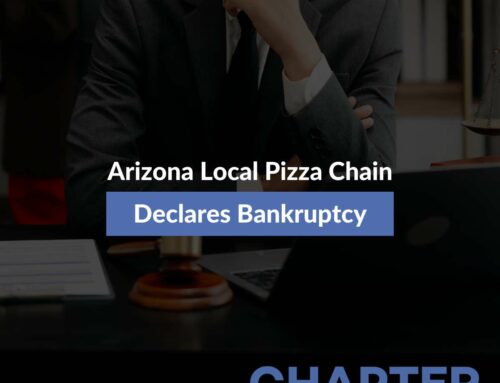Just about the whole world knows that there is an issue with the price of health care in the United States. Even a simple checkup could result in discovering an issue that costs several hundred, or even thousands of dollars to treat. With prices of other necessities like housing and groceries sky-high, some people forego medical treatment because of the exorbitant costs. So is it worth it to tough out a medical problem to avoid accruing medical debt? Medical debt is the leading cause of bankruptcy filings in our country. Many people view declaring bankruptcy as a worst-case financial scenario. But bankruptcy gives debtors the chance to clear burdensome debts and repair their credit after discharge. Read on to learn more about how much it might cost you if you need any of the most common medical procedures in Arizona. To schedule your free consultation with an experienced member of our Arizona debt relief firm, call 480-405-1010.

How Much Does It Cost To Give Birth In Arizona?
Raising children is expensive- it starts even before childbirth during prenatal care, but the delivery itself can put the parents in debt before they even have to worry about things like tuition and school supplies. Mothers who deliver via C-section can expect higher bills than those who deliver vaginally. Overall, it is estimated that it costs about $19,000 to give birth.
How Much Does Dental Care Cost In Arizona?
As annoying as it can be to floss daily and brush for two minutes, it can garner massive savings in the long term. A simple dental cleaning costs, on average, $150. A porcelain crown or a root canal will both set the patient back about $1,200. For dentures, the patient can expect to spend upwards of $1,800, even with dental insurance coverage. If a patient ignores dental issues because of their costs, it can evolve into even more serious (and expensive) dental issues.
How Much Does It Cost To Treat Broken Bones In Arizona?
Breaking one or more bones can be devastating in a number of ways. The incident itself can be painful, as can treatment and recovery, especially if treatment requires surgery. The patient might need to attend physical therapy before and after surgery, which is hard work and comes with significant costs. What is required for treatment depends on several factors, but certain bone groups require more intensive care than others. Fractures can also require less intensive treatment than clean breaks. Toes and fingers are among the simplest and most affordable broken bones to treat. Longer bones, like the tibia and femur, can require longer surgery and recovery time. Joints, like the knees and ankles, are also more complicated to treat than other bones in the body. You can find a list of the average cost to repair certain bones after a break or fracture here.
How Much Does It Cost For A Tonsil Removal In Arizona?
Everyone is born with tonsils, but some people must eventually have them removed for health reasons. How much it costs a tonsil removal patient will depend on whether the procedure is performed at a hospital or a surgery center. The average price of a tonsil removal at a hospital in Arizona is $7,513. A patient can save some funds by having their tonsils removed at a surgery center, which costs on average in Arizona $4,073.
Filing Bankruptcy To Clear Overwhelming Medical Debt
Oftentimes, a medical patient requires a combination of medical procedures rather than a singular treatment. When this happens, the patient can be left with thousands of dollars in medical bills, which they may or may not be able to pay. Their ability to pay may even be impeded by their illness or injury keeping them from going out and earning an income. There are a few ways a patient can proceed if they have unpaid medical bills and no means to pay them. Most medical providers will be willing to work out payment plans with patients with unpaid balances. They are usually more restricted than other creditors when pursuing collection, and prefer receiving some payment over the bill being discharged in bankruptcy. You might also qualify to have some or all of your medical bills forgiven. Public hospitals and some other health facilities are required to offer these types of programs to those with limited financial means. Based on your income level, you could qualify to have a set percentage of your hospital bill reduced, and then work out a payment plan to pay off the rest. But you might not qualify, the amount you have forgiven might not be enough, or you may have medical debt from providers who aren’t required to participate in debt forgiveness. That is where someone struggling to rid themselves of medical debt should consider filing for bankruptcy.
When it comes to bankruptcy, there are three major categories into which debts can be sorted. Secured debts are debts- typically loans- with assets attached as collateral. Auto loans and home mortgages are common examples of secured debts. Priority debts don’t have assets for collateral, but still hold a place of importance when it comes to debt relief. They can’t be discharged without repayment, or at least a good faith effort and some high-quality legal maneuvering. Student loans and child support are some examples of priority debts. Medical debts are in the third category of debts, unsecured debts. Like credit cards and personal loans, there is no asset attached as collateral that the creditor can seize to enforce payment. Medical debts and other unsecured debts are the easiest category of debts to clear in bankruptcy.
To clear medical debts with bankruptcy, the debtor must first determine their eligibility. Usually, the factor that bankruptcy eligibility hinges on is household income level. A debtor can qualify for chapter 7 bankruptcy, which clears debts without repayment, if their household income falls below the state median or they show they don’t have sufficient disposable monthly income to pay their debts with the means test. In chapter 7 bankruptcy, medical debts and other unsecured debts are cleared in a matter of just a few months. Otherwise, the debtor may qualify for chapter 13 bankruptcy instead. In chapter 13 bankruptcy, debts are rearranged into a payment plan lasting either 3 or 5 years. The debtor will pay off all of their secured and priority debts first. Unsecured debts, such as medical bills, are only paid to the extent that the debtor’s income allows.
Learn More About Clearing Medical Bills With Bankruptcy In Arizona
If you have debt you can’t pay, you’re in the type of situation for which bankruptcy was created. Bankruptcy is a safety net for people dealing with unforeseen circumstances such as bills from an illness or injury. Chapter 7 or chapter 13 bankruptcy could be the answer to your problems stemming from medical debt. If you have questions about the process and your eligibility in Arizona, you don’t need to figure out their answers alone. Our bankruptcy attorneys team offers free consultations by phone and affordable payment plan options for eligible clients. Schedule your free consultation today by calling 480-405-1010.
CHAPTER BANKRUPTCY LAWYERS
Email: [email protected]
Website: www.chapterbankruptcylaw.com
Mesa Office
3707 E Southern Ave
Mesa, AZ 85206
Office: 480-405-1010
Tempe Office
4500 S Lakeshore Dr #300
Tempe, AZ 85282
Office: 480-562-6145







